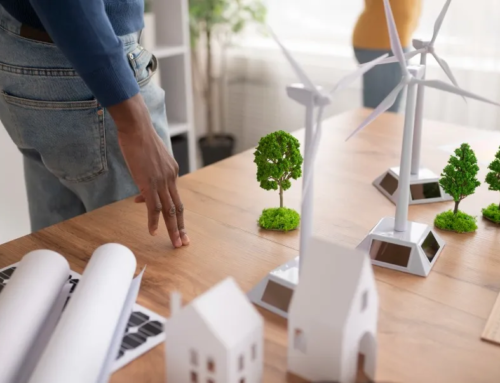Understanding how to cool your home effectively is important if you’re trying to be more eco-conscious. So, let’s start with the basics. Do ceiling fans use a lot of electricity?
On average, a ceiling fan uses anywhere between 0.025 and 0.075 kWh per hour. How does that compare to other cooling methods?
Let’s consider the numbers, assuming an energy cost of $0.15/kWh. This can vary depending on where you live—for example, Ohio energy costs run around $0.12–$0.13/kWh, while New York energy costs are around $0.19/kWh.
| Appliance | kWh Usage | Cost ($0.15/kWh) |
| Ceiling fan | 0.025–0.075 kWh per hour | $0.01 per hour or less |
| Pedestal fan | 0.03–0.08 kWh per hour | $0.01 per hour or less |
| Whole-house fan | 0.2–0.4 kWh per hour | $0.03–$0.06 per hour |
| Window AC unit | 0.5–1 kWh per hour | $0.08–$0.15 per hour |
| Central AC | 3–3.5 kWh per hour | $0.45–$0.53 per hour |
Even if you run a ceiling fan 24 hours a day, it can still be cheaper than running an air conditioner for an hour. That’s a big difference!
You can save even more by being smart about your ceiling fan choice and use.
Choose the Right Ceiling Fan
If you’re shopping for a new, energy-saving ceiling fan, keep these things in mind.
Check the Size
Pay attention to sizing recommendations. Choosing a too-small fan means it has to work harder. Meanwhile, a fan that’s larger than a room needs to use more electricity than a correctly sized option at the same setting.
Check the Specifications
Look for an energy guide or list of specifications on the packaging. The lower the wattage, the better.
Consider Your Lighting
A ceiling fan with lighting features can use more electricity. Avoid a combination unit if you don’t necessarily need more lighting in the room.
Choose ENERGY STAR
Look for an ENERGY STAR rating. An ENERGY STAR ceiling fan can be up to 60% more energy efficient.
Look for Smart Fans
Smart fans can also help reduce energy costs by up to 11%. Smart fans can sense and respond to a room’s temperature and identify whether or not the room is occupied.
Save Money with Proper Ceiling Fan Use
Correct installation and using your new ceiling fan are your best defenses against energy waste. Be sure to invest in a setup that’s easy to use and adjust according to your needs.
Speed
Use the best speed to keep you comfortable. Using the highest speed all the time can be a waste of energy, while only using the lowest setting might compromise your comfort.
Direction
Be sure that your fan is rotating counterclockwise in the summer months. When it is on, you should be able to feel a direct breeze, which helps keep you cool.
Lighting
Having lights in your ceiling fan can be helpful or encourage excessive electricity use. The lights add heat to the room, making it harder to cool off and use more electricity. If you don’t need the lights during certain times, don’t turn them on.
Timing
You shouldn’t leave your ceiling fan on all the time. The purpose of a fan is to create a breeze you can feel, which provides a cooling sensation. It’s not helpful if you aren’t in the room.
Cleaning
If you take care of your ceiling fan, it can do a better job of taking care of you. Motors that have become dusty or loose mountings can lead to more energy use and potential repair or replacement costs.
Do Ceiling Fans Help With AC Bills?
Using your ceiling fan along with your AC unit can be helpful. The ceiling fan provides additional heat relief by moving cool air over the people in the room. The combination of the two allows you to stay comfortable even with a higher AC temperature setting. Since ceiling fans don’t use a lot of electricity, this can help reduce your AC bill.
Get to Know Kiwi Energy
Are you ready to learn more about renewable energy and sustainable living? Get to know us!
If you’re looking for a better energy solution in Ohio or New York, contact us to see what we can do for you.





